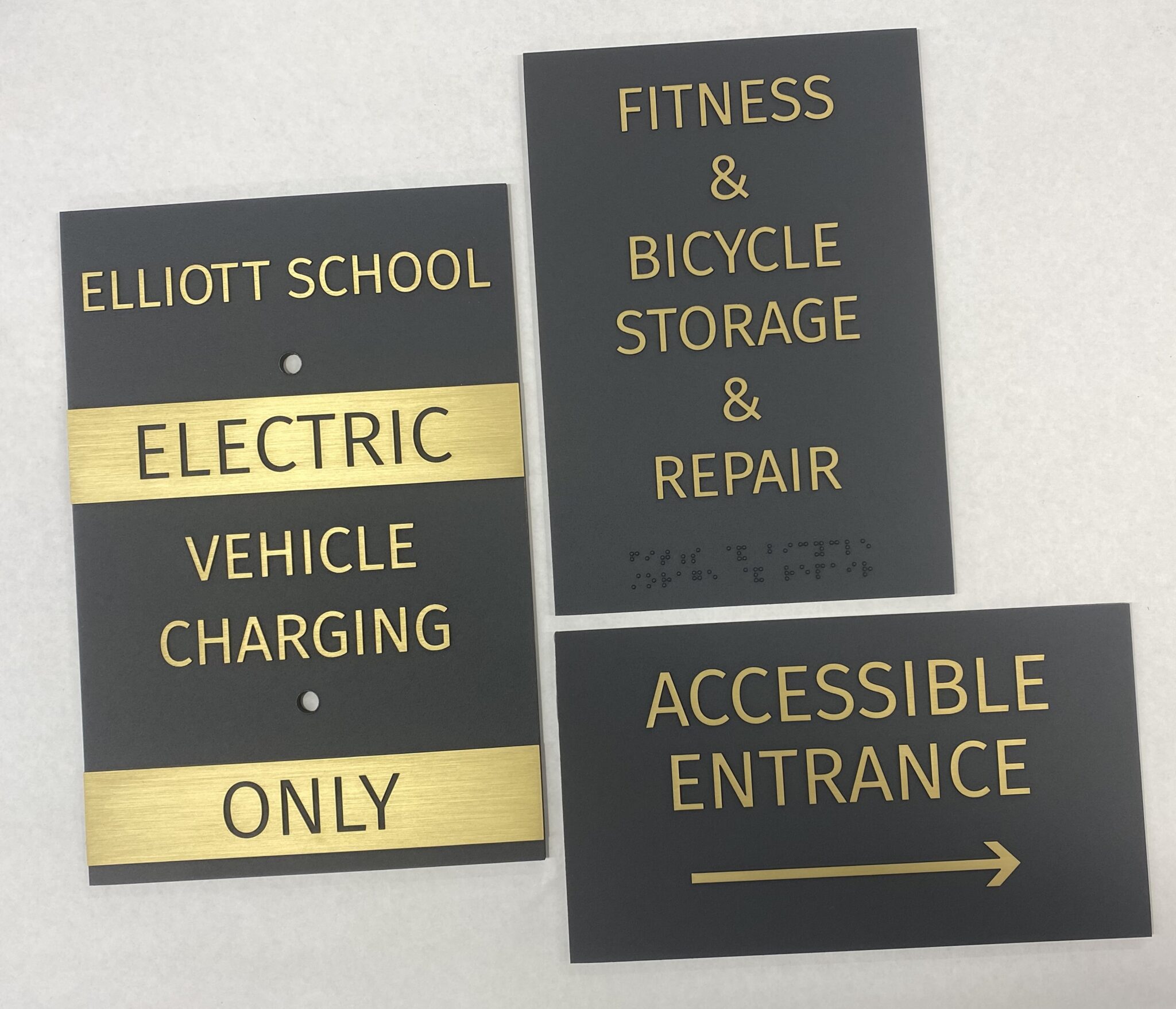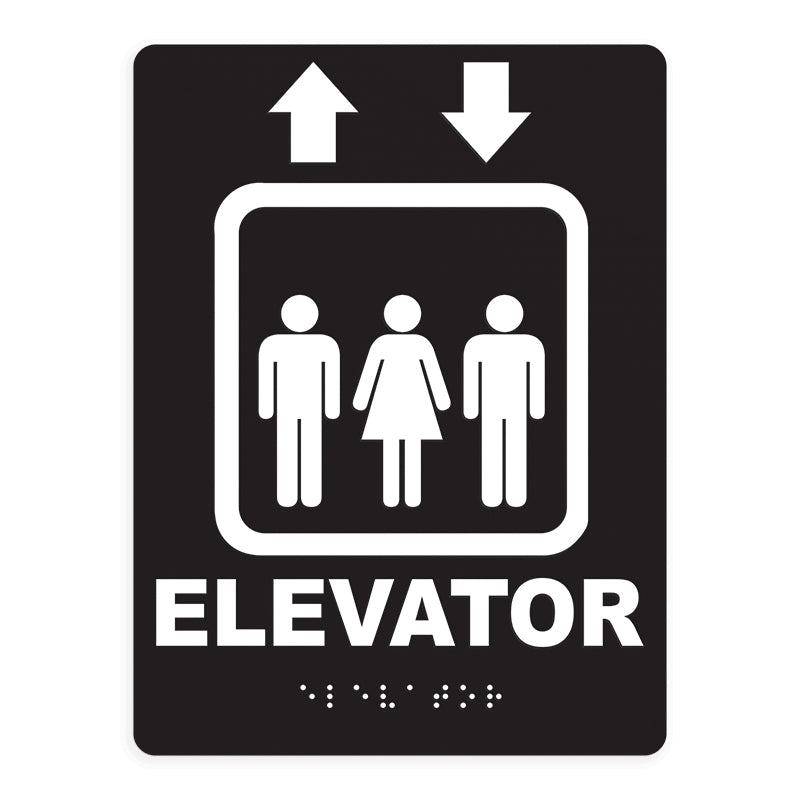The Function of ADA Signs in Abiding By Availability Requirements
The Function of ADA Signs in Abiding By Availability Requirements
Blog Article
Discovering the Trick Attributes of ADA Indications for Improved Accessibility
In the realm of accessibility, ADA indications offer as quiet yet powerful allies, ensuring that rooms are accessible and comprehensive for people with specials needs. By incorporating Braille and tactile aspects, these signs damage obstacles for the visually impaired, while high-contrast shade plans and clear typefaces provide to varied visual needs.
Relevance of ADA Conformity
Guaranteeing compliance with the Americans with Disabilities Act (ADA) is critical for fostering inclusivity and equivalent accessibility in public spaces and offices. The ADA, enacted in 1990, mandates that all public centers, employers, and transport services suit people with handicaps, guaranteeing they appreciate the same civil liberties and possibilities as others. Conformity with ADA criteria not only satisfies legal commitments yet likewise boosts a company's reputation by demonstrating its dedication to diversity and inclusivity.
One of the key elements of ADA compliance is the application of accessible signs. ADA indications are designed to ensure that individuals with impairments can quickly browse via structures and spaces. These signs must stick to particular standards regarding dimension, font, shade contrast, and positioning to guarantee exposure and readability for all. Effectively executed ADA signage aids get rid of barriers that people with disabilities frequently experience, thereby advertising their freedom and self-confidence (ADA Signs).
Moreover, sticking to ADA laws can minimize the danger of legal consequences and prospective penalties. Organizations that fail to follow ADA standards may face lawsuits or fines, which can be both destructive and economically challenging to their public picture. Hence, ADA compliance is important to promoting a fair setting for everybody.
Braille and Tactile Components
The consolidation of Braille and responsive aspects right into ADA signage personifies the principles of access and inclusivity. These attributes are vital for people who are visually impaired or blind, allowing them to browse public rooms with better freedom and confidence. Braille, a responsive writing system, is crucial in offering created information in a layout that can be conveniently perceived through touch. It is normally placed underneath the equivalent text on signage to make certain that people can access the info without aesthetic support.
Tactile components extend beyond Braille and consist of elevated characters and icons. These components are designed to be discernible by touch, permitting individuals to identify room numbers, bathrooms, leaves, and various other crucial locations. The ADA sets details standards pertaining to the size, spacing, and positioning of these tactile components to optimize readability and guarantee consistency across different environments.

High-Contrast Color Pattern
High-contrast color design play a crucial function in enhancing the visibility and readability of ADA signs for individuals with visual problems. These schemes are vital as they maximize the distinction in light reflectance in between message and history, guaranteeing that indications are quickly noticeable, also from a range. The Americans with Disabilities Act (ADA) mandates the use of certain color contrasts to fit those with minimal vision, making it a critical aspect of conformity.
The efficacy of high-contrast colors depends on their capability to stand out in numerous lighting conditions, including poorly lit settings and areas with glow. Commonly, dark text on a light history or light text on a dark history is used to accomplish ideal comparison. For example, black message on a yellow or white background find out here now gives a plain aesthetic distinction that helps in fast recognition and comprehension.

Legible Fonts and Text Dimension
When taking into consideration the design of ADA signs, the choice of clear fonts and appropriate message dimension can not be overstated. The Americans with Disabilities Act (ADA) mandates that font styles need to be sans-serif and not italic, oblique, script, very attractive, or of uncommon form.
According to ADA guidelines, the minimal text height ought to be 5/8 inch, and it ought to increase proportionally with watching distance. Consistency in text size contributes to a cohesive visual experience, assisting individuals in navigating atmospheres successfully.
In addition, spacing between lines and letters is essential to readability. Sufficient spacing protects against characters from showing up crowded, improving readability. By sticking to these criteria, designers can substantially improve access, ensuring that signage offers its intended function for all individuals, regardless of their aesthetic capabilities.
Effective Placement Techniques
Strategic positioning of ADA signage is essential for making the most of accessibility and making certain compliance with lawful standards. Appropriately located signs guide individuals with handicaps effectively, facilitating navigating in public areas. Secret factors to consider include proximity, height, and presence. ADA guidelines specify that indications must be mounted at an elevation in between 48 to 60 inches from the ground to guarantee they are within the line of view for both standing and seated people. This standard elevation range is vital for inclusivity, making it possible for wheelchair customers and people of varying heights to access details easily.
Furthermore, signs need to be put nearby to the lock side of doors to enable easy recognition before entry. Uniformity in indicator positioning throughout a center improves predictability, reducing confusion and boosting total individual experience.

Final Thought
ADA click this link signs play an essential role in promoting ease of access by incorporating functions that resolve the needs of individuals with disabilities. Incorporating Braille and tactile elements guarantees crucial information comes to the aesthetically impaired, while high-contrast color design and understandable sans-serif font styles enhance exposure across different illumination conditions. Efficient placement approaches, such as proper installing elevations and calculated places, even more facilitate navigation. These aspects collectively promote a comprehensive setting, highlighting the value of ADA conformity in guaranteeing equal accessibility for all.
In the world of accessibility, ADA signs offer as silent yet powerful allies, ensuring that areas are comprehensive and navigable for individuals with specials needs. The ADA, established in 1990, mandates that all public centers, employers, and transportation services accommodate individuals with disabilities, guaranteeing they enjoy the exact same legal rights and chances as others. ADA Signs. ADA signs are created to more tips here guarantee that people with impairments can easily browse through rooms and buildings. ADA standards stipulate that indicators need to be installed at a height between 48 to 60 inches from the ground to ensure they are within the line of view for both standing and seated people.ADA signs play an essential function in advertising accessibility by integrating features that address the demands of individuals with impairments
Report this page